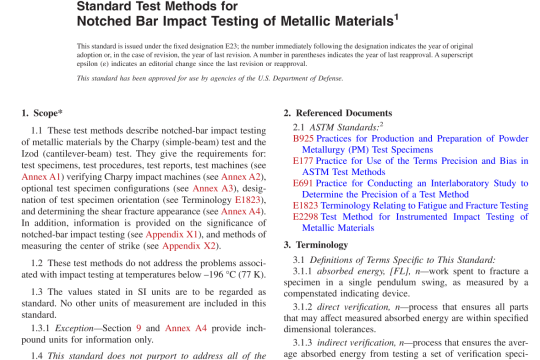ASTM F479-2017 pdf free download
ASTM F479-2017 pdf free download.Standard Specification for In-Service Care of Insulating Blankets
1. Scope
1.1 This specification covers the in-service care, inspection, testing, and use voltage of insulating blankets for protection of workers from accidental contact with live electrical conductors, apparatus, or circuits. The product requirements and acceptance testing are as shown in Specification D1048. 1.2 The values stated in inch-pound units are to be regarded as standard. The values given in parentheses are mathematical conversions to SI units that are provided for information only and are not considered standard. 1.3 This standard does not purport to address all of the safety concerns, if any, associated with its use. It is the responsibility of the user of this standard to establish appro- priate safety, health, and environmental practices and deter- mine the applicability ofregulatory limitations prior to use.See Section 6 and 8.2 for specific precautionary statements. 1.4 This international standard was developed in accor- dance with internationally recognized principles on standard- ization established in the Decision on Principles for the Development of International Standards, Guides and Recom- mendations issued by the World Trade Organization Technical Barriers to Trade (TBT) Committee.
3. Terminology
3.1 Definitions: 3.1.1 breakdown—the electrical discharge or arc occurring between the electrodes and through the equipment being tested. 3.1.2 compatible—not injurious to or changing the physical or electrical characteristics of the blankets or affecting their application, use, or acceptability. 3.1.3 designated person—an individual who is qualified by experience or training to perform an assigned task. 3.1.4 electrical testing facility—a location with qualified personnel, testing equipment, and procedures for the inspection and electrical testing of electrical insulating protective equip- ment. 3.1.5 electrode—the energized or grounded conductor por- tion of electrical test equipment which is placed near or in contact with the material or equipment being tested. 3.1.6 flashover—the electrical discharge or arc occurring between electrodes and over or around, but not through, the equipment being tested. 3.1.7 insulated—separated from other conducting surfaces by a dielectric substance (including air space) offering a high resistance to the passage of current. 3.1.7.1 Discussion—When any object is said to be insulated, it is understood to be insulated in a suitable manner for the conditions to which it is subjected. Otherwise, it is, within the purposes ofthis definitions, uninsulated. Insulating covering of conductors is one means of making the conductor insulated. 3.1.8 ozone—a very active form of oxygen that may be produced by corona, arcing, or ultraviolet rays. 3.1.9 ozone cutting and checking—the cracks produced by ozone in a material under mechanical stress. 3.1.10 retest—the tests given after the initial acceptance test usually performed at regular periodic intervals or as required because of physical inspection. 3.1.11 unassigned blankets—blankets that are in storage prior to being issued for use.3.1.12.1 Discussion—Ifthere is no multiphase exposure in a system area, and the voltage exposure is limited to the phase (polarity on dc systems) to ground potential, the phase (polarity on dc systems) to ground potential shall be considered to be the nominal design voltage. 3.1.12.2 Discussion—If electrical equipment and devices are insulated or isolated, or both, such that the multiphase exposure on a grounded wye circuit is removed, then the nominal design voltage may be considered as the phase-to- ground voltage on that circuit. 3.1.12.3 Discussion—The work practices and methods as- sociated with removing multiphase exposures at any given work site are not addressed in the ASTM standards. The users of ASTM standards should reference appropriate industry consensus standards for proper work practices. 3.1.13 voltage, maximum retest—the voltage, either ac rms or dc avg, that is equal to the proof test voltage for new protective equipment. 3.1.14 voltage, nominal design—a nominal value consistent with ANSI C84.1-2001, assigned to the circuit or system for the purpose of conveniently designating its voltage class. 3.1.15 voltage, retest—the voltage, either ac rms or dc avg, that used protective equipment must be capable of withstand- ing for a specified test period without breakdown. 3.2 For definitions of other terms, refer to Terminology F819.




